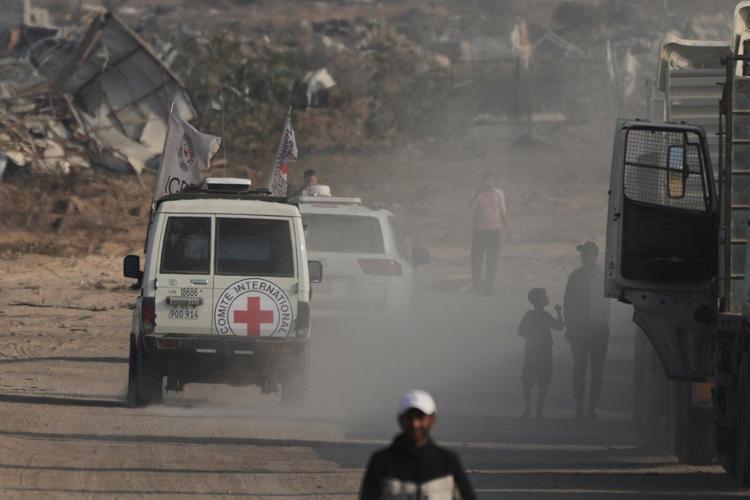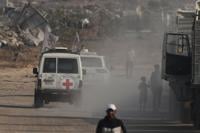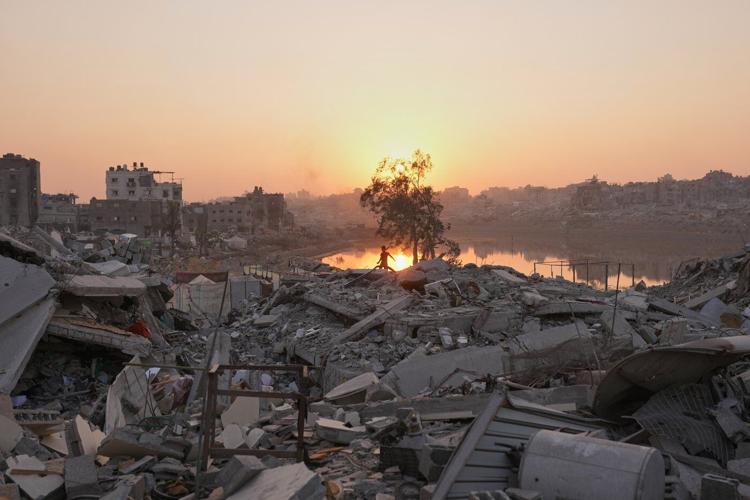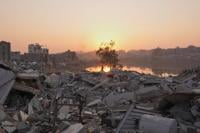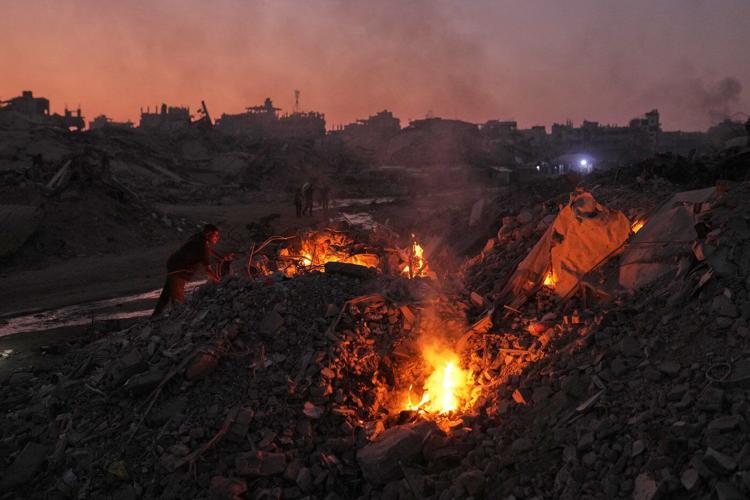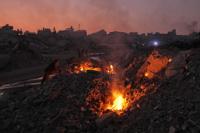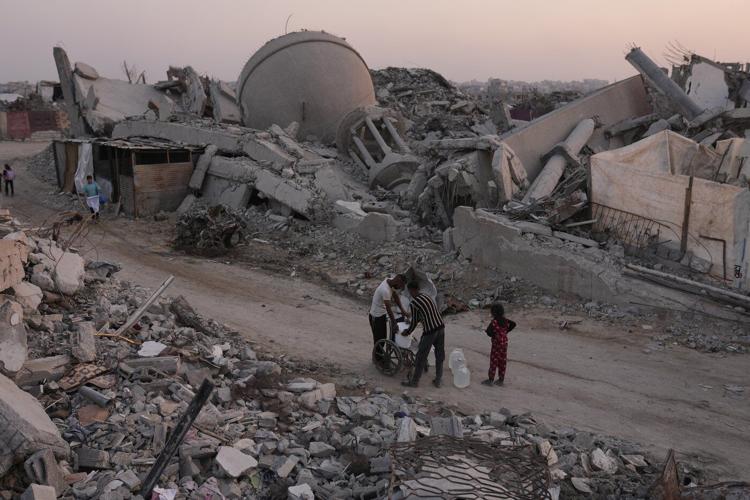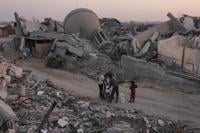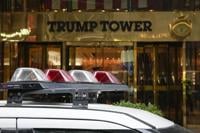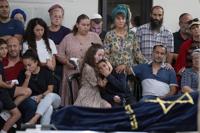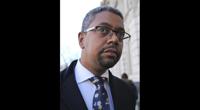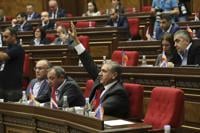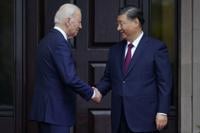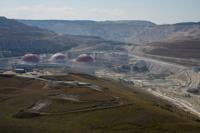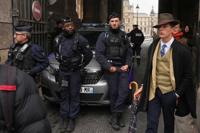DEIR AL-BALAH, Gaza Strip (AP) — U.S. President Donald Trump’s son-in-law, Jared Kushner, met on Monday with Israeli Prime Minister Benjamin Netanyahu to discuss the next stages of the fragile Gaza ceasefire, while Israel returned the remains of another 15 Palestinians.
The remains of are still in Gaza after Palestinian militants released the remains of another on Sunday.
The first stage of the ceasefire that took effect on Oct. 10 is nearing its end. The next stage calls for the implementation of a governing body for Gaza and the deployment of an international stabilization force. It is not clear where either stands.
Israel ended the previous ceasefire agreement earlier this year after a period of exchanging hostages for Palestinian prisoners. At the time, mediators were unable to bring Hamas and Israel to the table to negotiate a troop withdrawal and a plan for the future governance of Gaza.
The latest exchange of bodies
For each Israeli hostage returned, Israel has been releasing the remains of 15 Palestinians — an exchange central to the ceasefire's first phase. The Gaza Health Ministry said the total number of remains received is now 315.
Only 91 have been identified, the ministry said. Forensic work is complicated by a lack of DNA testing kits in Gaza. The ministry posts photos of the remains online in the hope that families will recognize them.
One mother waited at Nasser Hospital in the southern city of Khan Younis, wondering whether her missing 15-year-old son was among the new remains returned. He disappeared while on the way to school on Oct. 7, 2023, when Hamas launched an attack on Israel that started the war.
“Rayyan has been missing for two years. I don’t know his fate, whether he’s still alive or dead,” Shaima Abu Ouda said. She said he vanished near the wall separating Gaza and southern Israel. Her husband and eldest son were killed during the war.
On Sunday, Israel confirmed it had received the remains of Hadar Goldin, a soldier killed in the in 2014, closing a painful chapter for the country. The 23-year-old was killed two hours after a ceasefire took effect in that year’s war between Israel and Hamas.
His remains had been the only ones left in Gaza predating the current . A funeral was scheduled for Tuesday.
Around 1,200 people, mostly civilians, were killed in the 2023 Hamas-led attack on Israel, and 251 people were kidnapped.
On Saturday, Gaza’s Health Ministry said the number of Palestinians killed in Gaza has risen to 69,176. Its count does not distinguish between militants and civilians, but the ministry says more than half of those killed were women and children.
The ministry, part of the Hamas-run government and staffed by medical professionals, maintains detailed records viewed as generally reliable by independent experts.
US officials try to push ceasefire forward
Netanyahu and Kushner discussed the progress and future of the ceasefire, said Israeli government spokesperson Shosh Bedrosian.
The deal has focused on the first phase of halting the fighting, releasing all hostages and boosting humanitarian aid to Gaza. Details of the second phase haven’t been worked out.
Kushner also was helping to lead negotiations to secure safe passage for 150-200 trapped Hamas militants in exchange for surrendering their weapons after the release of Goldin’s remains, according to someone close to the negotiations who spoke on condition of anonymity to describe the talks.
Bedrosian did not say where those negotiations were headed.
Hamas has made no comment on a possible exchange for its fighters stuck in the so-called yellow zone of territory controlled by Israeli forces, though it has acknowledged that clashes were taking place there.
West Bank village faces demolition
Palestinians in the Israeli-occupied West Bank village of , which was featured in the Oscar-winning documentary “No Other Land,” was bracing Monday for the arrival of Israeli military bulldozers.
The documentary chronicles villagers’ attempts to survive state-backed demolitions and rampant violence from Israeli settlers.
Residents say Israel has ordered the demolition of 14 structures, including the community center, greenhouse and family homes. A press release from the community said the demolitions could begin Tuesday.
Israel says the structures were built illegally. Residents, determined to stay on their land, say it is impossible to secure permits to build in the West Bank, leaving them little choice but to rebuild their homes following demolitions.
Bimkom, an Israeli rights group that focuses on urban planning, says that between 2016 and 2021 Israel rejected 99% of Palestinian requests for building permits in Area C of the West Bank, where Umm al-Khair is located.
The village was founded in the 1950s by traditionally nomadic people, known as Bedouin, who settled there after being uprooted from the Negev desert during the 1948 war surrounding Israel’s creation. Two decades later, Umm al-Khair fell under Israeli security control when Israel captured the West Bank.
Settler attacks, residents say, began in the 1980s, after Israel built the settlement of Carmel close to Umm al-Khair.
Earlier this year, an internationally sanctioned Israeli settler , Awdah Hathaleen, as he was standing inside the community center slated for demolition.
___
Find more of AP’s Israel-Hamas coverage at

